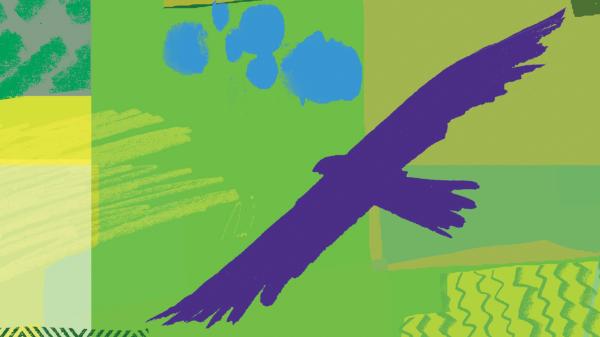
I’ve discovered wild Britain’s best-kept secret — a fragmented hinterland where modest magic lurks
The falcon turned and turned in the air above us, wings like the knives on Boadicea’s chariot. The bird’s swaggering self-confidence made identification easy. Peregrine, what else? We were on Beck Meadow, in Norfolk. Nice place. Nothing special, though. And that was precisely the point.
What does the world look like from up there? Everyone who ever chose a window seat has a rough idea. Looking down, you see the connections — and therefore some of the meanings. You see the extent of the wood, you see the suburban back gardens as a single extensive place, you see the golf courses and football pitches, you see the vastness of the farmed landscape. And you see the wilder bits, too.
If the air is your home, you understand connectivity — the way one wild place relates to another and how the connections make each place slightly more valuable. The peregrine flying over Beck Meadow understood all that. That’s why she — big and burly, so surely a female — was there. Flying from one wild place to another in search of lunch.
Beck Meadow is a County Wildlife Site, part of a nationwide network of places sometimes called Local Wildlife Sites. There are 1,300 of them in Norfolk alone. They are not to be numbered among the great pilgrimage centres for wildlife enthusiasts, but they matter all right. They are, if you like, the poor bloody infantry, the third-change bowlers, the holding midfielders, the hero’s best friend and the heroine’s confidant: not glamorous, just essential. In their totality they are perhaps the most important thing in wild Britain.
I visited three of them in a morning with Helen Baczkowska, conservation officer at Norfolk Wildlife Trust, all a few minutes from my home. I had no idea of any of them existed. At Chedgrave Common — common land by name only — heathland descends to fen and pond. Funding for management has come from the Broads Authority; most wild sites need management if they are to keep their richness.
Hellington Low Common is leased from the diocese by Hellington Wildlife Group. It’s a people-friendly place with mown paths and little bridges across the dykes. A grass snake vanished at our feet with what in any other creature I’d call a fine turn of foot. We crouched in delight at a turd; unmistakable sign of an otter.
Beck Meadow had recently been acquired by a local estate, and is being managed sympathetically with grants from Defra.
The designation — County or Local Wildlife Site — gives some protection from planners, and is helpful in getting grants. A lot of it comes down to goodwill. Goodwill from landowners and managers and local councils and local people. These sites are the soft edges around the hard-nosed land-management policies we have for housing, transport, industry and farming. The scheme has been going since the 1980s and it plays a role in wildlife conservation that is at the same time modest and indispensable.
They are often the first things that get nibbled away. But in its totality this network of sites is a vast national asset, a great chequerboard of places that support the kind of wildlife we have lost in such dismaying quantities. I heard the call of a willow warbler, on his way to sub-Saharan Africa, dropping in at Beck Meadow to refuel. Where would he be without such a place? Where would we all be?
Every county has its centres of excellence: places full of visitors seeking the great wildlife spectacles of our country. These are the Premier League of wildlife. But just as elite football couldn’t exist without the vast network of clubs across all ranges of ability and age, so the great wildlife spectacles of the country couldn’t exist without the thousands of small, secret places like these three. Places of modest magic.
SIMON SAYS
- Savour every red admiral you see — it might be the last of the year
- See if Slovenia can force English football even lower. Tuesday, 7.45pm, ITV
- Check out The Arctic Guide by Sharon Chester. Includes all taxa — I wish there was one like that for every place I visit
